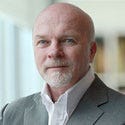
According to the Gartner Hype Cycle, the "Peak of Inflated Expectations" happens about five to ten years before a "Plateau of Productivity" is reached. Given we are in 2016, that would imply 5G -- were it to follow such a cycle -- would come in to commercial strength between 2021 and 2026. Coincidentally, 2021 happens to be just over a year after 3rd Generation Partnership Project (3GPP) standardization is expected to be completed (Release 16, 2019); a typical gap between specification availability and commercial products.
So is 5G at its peak and about to enter a "Trough of Disillusionment," or is something different happening here? Putting it another way, is 5G activity now a game of Truth or Dare between multiple competitors? There is evidence to support both perspectives.
The time between completed initial 3G and 4G specifications -- Release 99 and Release 8 respectively -- and nationwide network deployments were, arguably, about three to five years. 5G will be standardized in two phases: Release 15 in June 2018, and Release 16 in September 2019, respectively.
Verizon Communications Inc. (NYSE: VZ) has announced plans for commercial fixed 5G deployments in late 2017 or 2018. Korea Telecom plans to showcase advanced 5G use cases at the South Korean Winter Olympics in 2018. That is a full two to three years before 3GPP standardization is expected to be completed! (See 3GPP Wants to Complete Initial 5G Radio Spec in June 2018.)
The desire to accelerate the normal 3GPP pace for 5G has been so acute that Korea Telecom and Verizon created multi-company forums to create pre-standard specifications in 2015. These were followed by an announcement at Mobile World Congress in February, 2016, regarding the launch of a 5G Trial Specification Alliance (5G TSA). Formed by KT, SK Telecom (Nasdaq: SKM), NTT DoCoMo Inc. (NYSE: DCM) and Verizon, its goals were to combine forces and publish a single specification, thereby reducing fragmentation in pre-standard trials. This, in turn, was followed by a proposal during the 3GPP June, 2016 plenary in South Korea to accelerate L1/L2 specifications to December, 2017 (from June, 2018).
Not all has gone as envisioned; however, Verizon did publish L1 specifications from its work with vendors, including Nokia Networks , in July, 2016 -- a full 18 months before the 3GPP accelerated target. Further publications from Verizon, KT or the 5G TSA are TBD. All of this is to say that 5G is anything but normal. The demand to accelerate specifications, and thus commercial products based on them, suggests a faster development cycle than all previous generations, and possibly a reduced or even eliminated hype cycle. (See Verizon Issues First 5G Radio Spec.)
From a technology perspective, a basic rule of thumb is that each wireless generation improves performance by at least a factor of ten. According to Moore's Law, processing capacity doubles every 18 months. That implies 5G needs a little more than three Moore cycles (2x2x2=8), or (3x18=54) 4.5 years (leading to 2020-2021), for the availability of silicon necessary to provide 10x performance levels at size, power and cost points similar to what we have today for LTE. Putting it another way, a commercially viable 5G basestation might need components only commercially available around 2020 to 2021.
The counter argument to this might be that you can create a fully virtualized implementation using off-the-shelf IT hardware, as Nokia has done in proof-of-concept (PoC) systems. It is true, however, the cost, size, and power requirements of such an implementation are likely to be greater than that of today's traditional implementations. That option exists though, and would ultimately be an operator decision: From a vendor's perspective it is technically viable. (See SKT, Nokia Hit 19.1 Gbit/s in 5G Test.)
Moving from a technical to a customer perspective, what is also new in 5G is the emergence of new players. Over-the-top (OTT) service providers, fixed and cable operators, new chipset suppliers and even enterprise WiFi players have all expressed some interest in 5G -- more so than in 4G. This interest, by the way, is not superficial. The seriousness of their intent can be seen by their participation in 3GPP standardization, spectrum auctions and trial plans. (See Google Searching for 5G Wireless Engineer.)
For traditional wireless service providers, Nokia has more than 25 MoUs signed, with plans for PoC demos, technology co-operation, lab systems, trials, and commercialization. Nearly every major customer has announced demo results. Given we are two years away from Phase 1 standardization, we can say, once again, 5G is perhaps not "normal."
Let's put this all together and address the original question -- is the 5G hype of today a dare by vendors and operators in some complex competitive play? Or is there some truth to the view that 5G is different and will come faster than any generation before? The answer is yes to both.
It is a fact that major industry players are developing deployment plans in advance of standardization or shortly thereafter, as we have never seen before. It is also a fact that some technology building blocks need more time which, granted, is variable based on implementations and expectations to create 5G systems with the size, cost and performance characteristics of a mature technology like LTE.
With these contradictions, one possibility on a global scale is that they converge to a degree, meaning some silicon and RF acceleration happens, combined with measured deployment plans. Indeed, there is some evidence of that happening. On a local scale, there are also urgent use cases that require 5G now that can progress in parallel to these normal technology steps. The technology works now, and in those cases, the short-term economics may be less important than providing services earlier rather than later.
To close, 5G is "True" in that things are happening faster than in any previous generation. The traditional hype cycle could be collapsed -- if not disappear altogether -- and thus it remains to be seen when or if we'll see a Trough of Disillusionment. There is also an element of "Dare" in that vendors and operators alike are pushing the envelope and challenging each other.
The question for all participants is: Are you willing to risk not taking the dare?
— Michael Murphy, CTO, North America, Nokia Networks
About the Author(s)
You May Also Like










